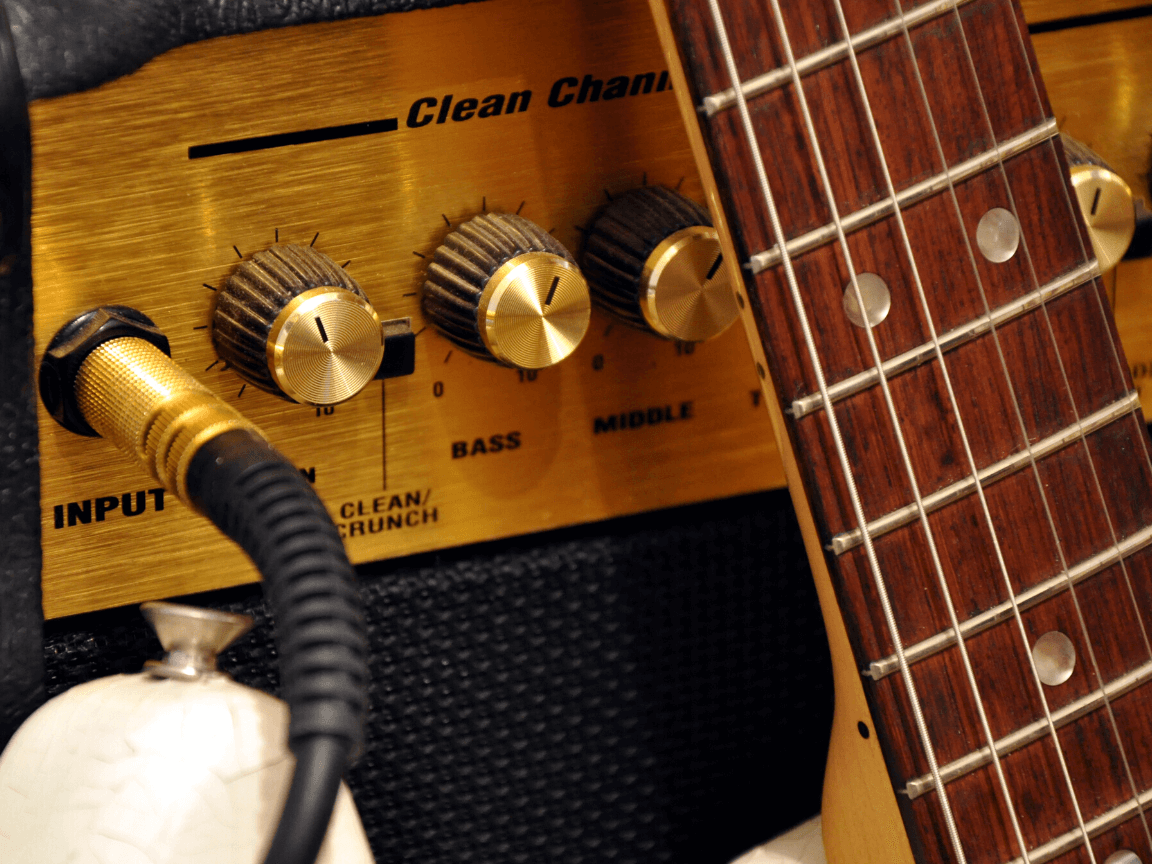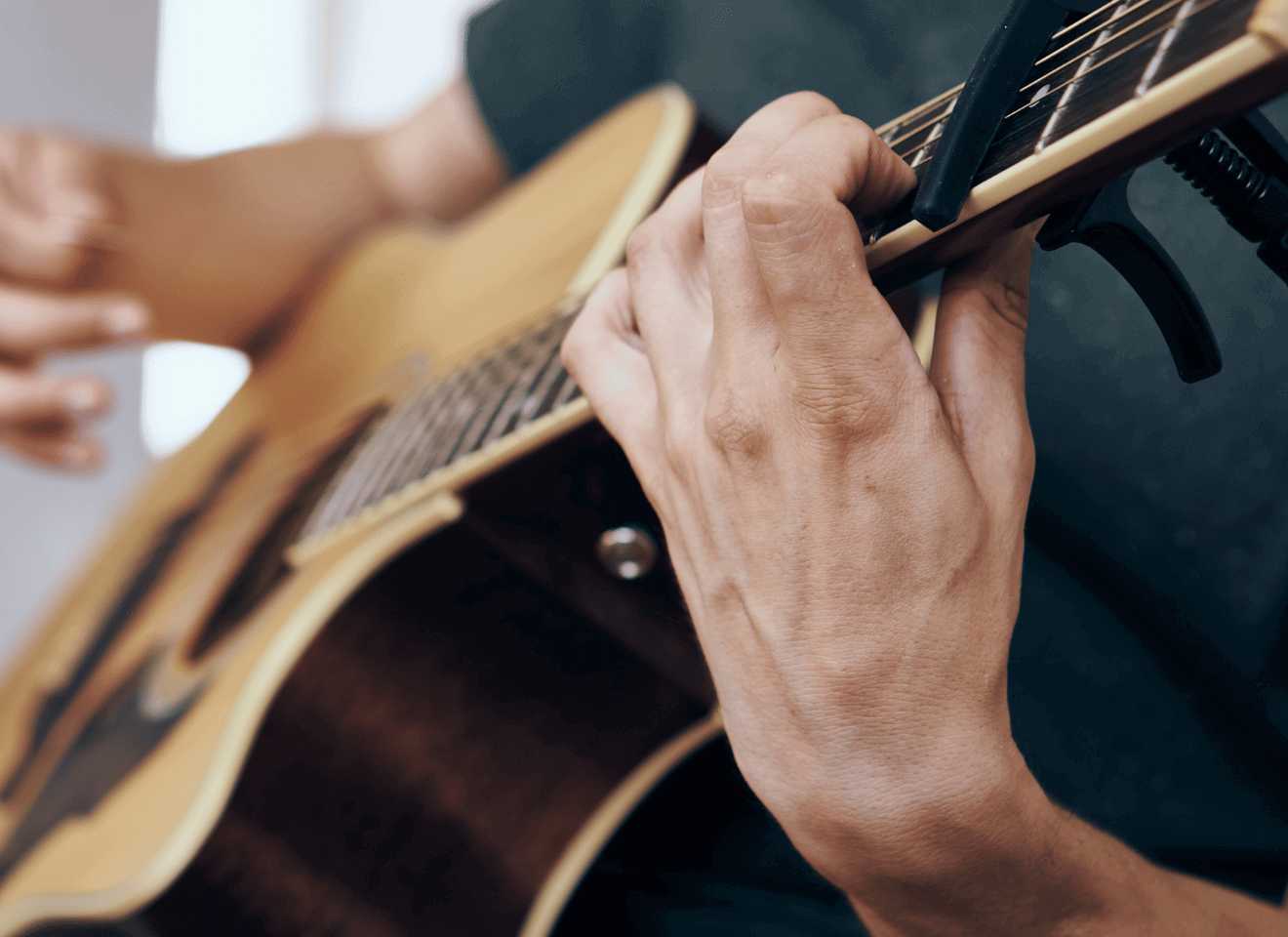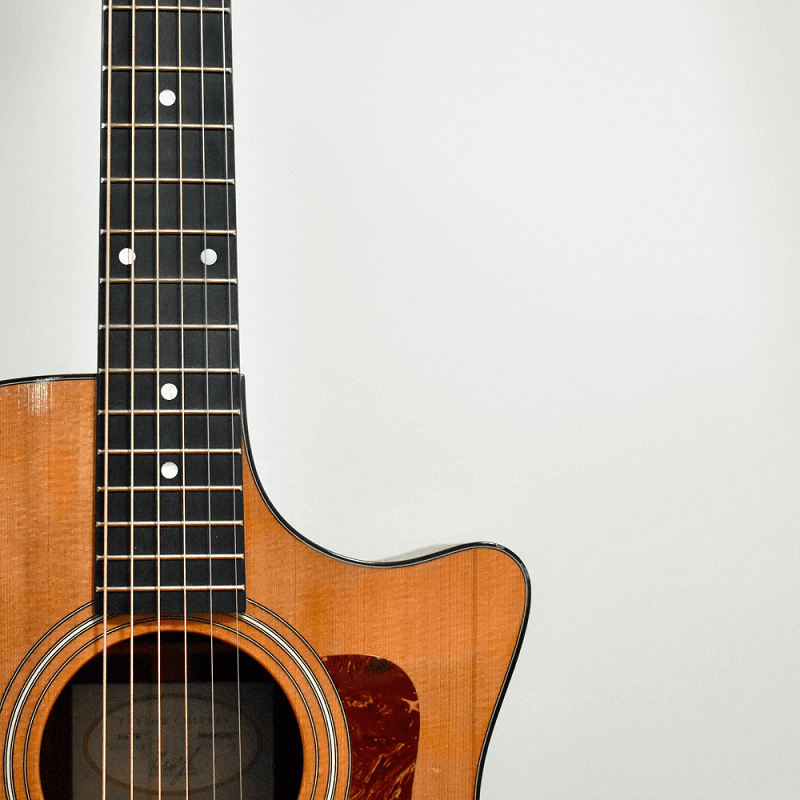How to not miss a note while playing the guitar?
At some point in time, we all look up to professional guitar players and admire how talented they are.
The way their fingers move on the strings so effortlessly leaves any beginner in awe.
With so much energy, you try to learn as much as you can so that one day you are able to play the guitar at such a level.
Well, there is nothing wrong with aspiring to be like a world-known guitar player. However, everything has its price, and this will never come that easy.
There might be a lot of bad habits that prevent us to get to that next level.
Some of these bad habits are developed unknowingly and can pose a significant influence on your playing abilities.
The secret to becoming better, though, is identifying and correcting these mistakes.
Table of Contents
Common mistakes and why you’re missing notes
These could be some of the mistakes that you’re making without even noticing them, and are definitely negatively impacting your playing precision:
1- Focusing on speed rather than accuracy
Many beginners tend to just want to play as fast as possible.
Once they lay their hands on the guitar for the first time, they already want to play songs at full speed.
Speed shouldn’t be anyone’s initial focus when they start learning to play the guitar.
What you should do is slowly teach yourself how to control your fingers and make accurate movements and transitions.
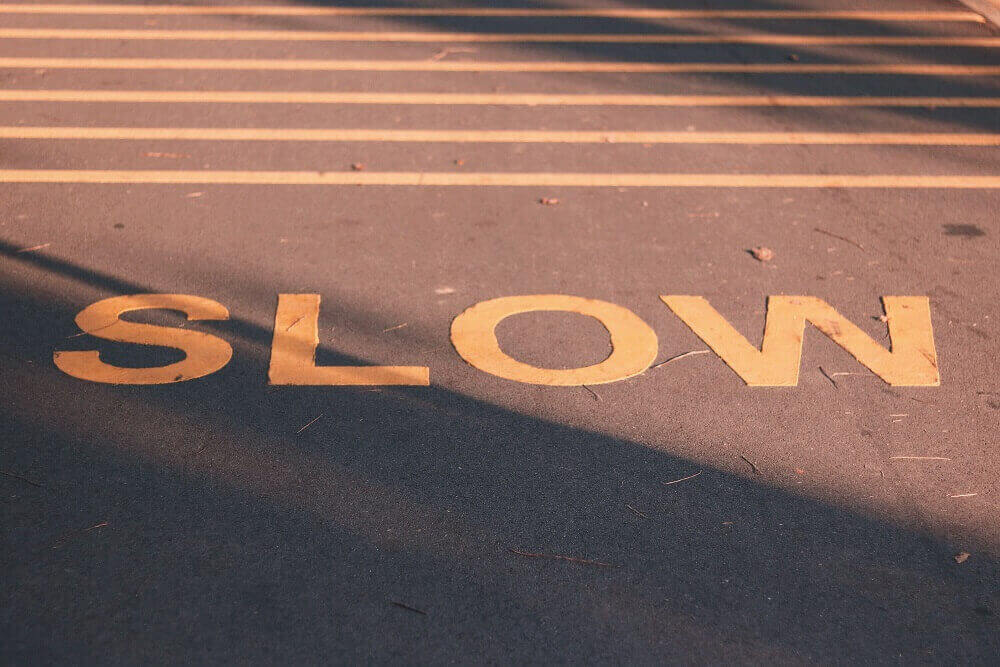
It’s extremely important that you understand what the right position for every note that you play is, and after that, you can gradually speed up.
As a matter of fact, when you take the time to learn to play the guitar correctly instead of rushing through things, then everything else will naturally fall into place.
Patience is key! That’s why using things such as a metronome is always very useful.
The truth is, most of the time, we get ahead of ourselves and ignore having proper form and hand positions, hence, we start playing very poorly.
If you find yourself missing a few notes while playing the guitar, your first potential solution is to simply slow down.
2- Not getting a decent guitar setup
This is another issue that most beginners are aware of, but just a few of them seem to do something about it.
I know of a good number of players that have never had a guitar that’s worth more than $100.
Now, I’ve also heard the old debate around whether a guitar’s price influences quality or not, and in my opinion, it does.
Many years ago, I learned to play the guitar with a $30 acoustic guitar, and I barely was able to play a barre chord.
Once I bought a guitar that was worth more money, the change was unbelievable.
- Are some guitar players able to play absolutely amazing on cheap guitars? Yes!
- Is everybody able to do that? No!
By why do I say all this?
Well, your guitar string action could definitely be influencing the way you play.
Cheap guitars tend to have awful guitar string action.
For those that might not know, when I say “string action”, I’m simply referring to the distance that separates the strings and your fretboard.
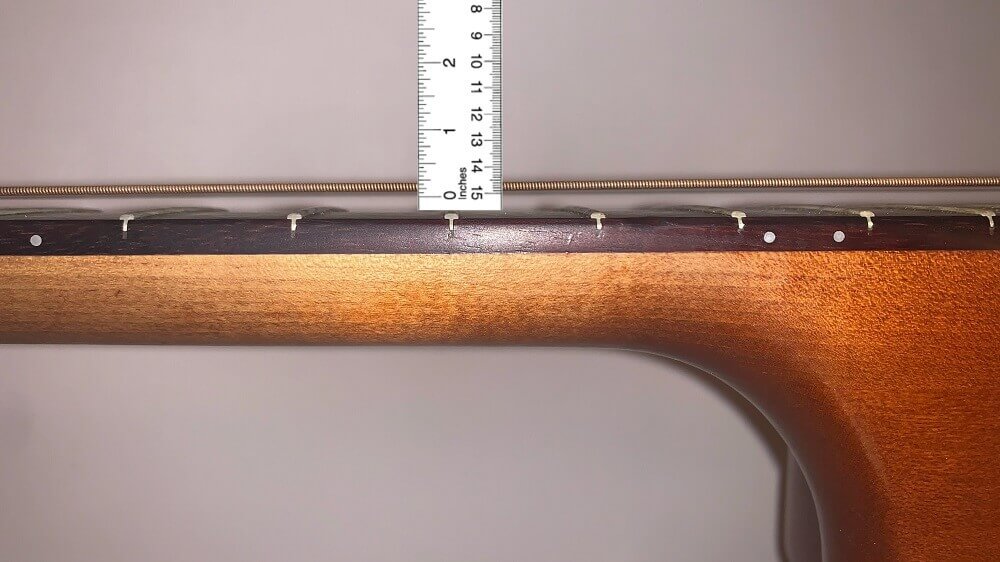
You’re probably pressing onto the strings too much!
As a result, this will make you play slower, but if you still don’t push hard enough, your notes will be fumbling all over the place.
The higher the string action, the higher the pressure required to press down on the strings.
While I’m not directly telling you to go ahead and buy a new guitar, just try lowering your string action, and if this doesn’t fix the problem, then it might be time to upgrade your gear.
3- Ignoring bad habits and not doing something about it
We can all agree that most guitar players have at least one or two areas that they’re not so good at.
Let that be rhythm guitarists not being proficient at soloing, or solo guitarists not being so good at playing rhythm guitar.
You might already know that you struggle to play a certain chord, or that a certain transition proves difficult to play.
But guess what?
You might not be doing anything about it, and that’s exactly why you might be still making the same mistakes over and over.
There’s a saying among the guitar community that goes something like this:
Don’t practice until you get it right. Practice until you can’t get it wrong.
And that’s essentially the mindset that you should have if you’re starting to learn to play or if you find yourself missing a note while playing the guitar.
Going back to our first piece of advice:
Slow down, and practice, practice, practice!
This way you can be in a better position to correct mistakes and improve your skills over time, and in the long term, you will not drag unnecessary bad playing habits.
This brings us to our next point…
4- Practicing the wrong things and in the wrong way
This is one big mistake that I often spot in beginners.
They almost never take the time to do precision and speed exercises (chromatic exercises).
Why?
My guess is that the excitement that comes with knowing how to play popular songs is higher than telling your friends that you play some pentatonic scale.
Even I was guilty of this at some point! 🙂
The hard truth is, simple and seemingly boring guitar exercises will make accomplished guitarists.
What you need to do is finding a good balance between the fun and the helpful practice.
Don’t keep on playing what you already know, instead, forge ahead and try to learn something new.
You can then go back to what you already know and enjoy playing the most, and then repeat this pattern every day.
With that said, there is nothing wrong with playing your favorite songs.
In fact, I usually recommend beginners do this when they first begin to play.
But if you feel like you’re not getting to the next step, then that’s when is more than important to start considering more serious practice exercises.
This will not only motivates you because you are getting better but also prevents stagnation.
Embrace new challenges with open arms!
5- Not using the proper guitar techniques in your playing
There are plenty of guitar techniques that are uniquely beneficial for certain types of songs or situations.
You might be ignoring or not making use of those techniques.
Things such as alternate picking, tremolo picking, fingerstyle playing, hammer-ons, slides, etc.
All of these are very helpful and if used correctly, they can elevate your guitar playing skills to the next level. It can also diminish the number of notes that you could potentially miss.
Let me explain myself further…
Sometimes as beginners, we tend to play songs or melodies by using the same principles that we are already comfortable with.
This could be using only downwards strumming patterns, or only picking a string in a certain direction, for example.
The problem with doing this is that we don’t get out of our comfort zone and start using the same wrong approach to different scenarios where doing it differently would make more sense.
I really encourage you to watch this YouTube video:
It will definitely give you a whole different point of view on this topic, and most importantly, it will help you understand how other things such as hand coordination play a big role in this.
Aside from that, Sean Daniel, the instructor, will show you how to prevent these mistakes from happening again as well as we are doing in the next section.
How to avoid constantly making mistakes and prevent note fumbling?
As I had mentioned earlier, the only way to avoid making some of these guitar mistakes is to actually identify them.
This will then allow you and give you the opportunity to correct them and do the right thing with practice, time, and effort.
Some of the things that you can start doing today that will help you do so are:
1- Be patient and trust the process
I have seen so many people start out well on their guitar practice only to give up somewhere along the way and abandon it altogether.
Seasoned guitarists playing at a professional level did not make it to where they are in just a single day.
It took long hours of practice, commitment, and patience to make that breakthrough.
Take time to grow your techniques and understand that there are some things that can’t be rushed.
Don’t set deadlines; instead, set goals and work towards them.
The reason we decided to have this as the first point, is so that you understand that the only way for you to avoid those mistakes is to implement good solutions and be disciplined about them.
2- Hold your guitar correctly all the time
Holding your guitar correctly all the time has multiple benefits.
Aside from preventing injury and bad habits, it will also allow you to learn faster and reach higher goals much easier.
One big mistake that most people make that affects them tremendously is holding the guitar incorrectly.
If you have noticed that you have a problem playing notes, chords, or certain guitar licks, start by checking whether you are holding the instrument the way it’s supposed to be held.
For example, sometimes we find that some beginners tend to wear their guitar straps way too low, which in turn prevents them from even playing all the full available notes on the fretboard.
Read: How To Properly Wear A Guitar Strap? | Low vs High or Style vs Health
👆 I encourage you to read our post on how to wear a guitar strap in the best way possible.
We talk about big influences by famous guitarists such as Slash, and all the advantages and disadvantages of playing it both low or high.
3- Ask for opinions, but don’t overthink it
Whenever you get stuck, don’t try to look for solutions all over the internet.
While you’re obviously doing so right now, I would advise you to not overthink what you’re getting told too much.
People will have different opinions on this topic, and if you attempt to do every single thing that each one of us tells you, you will end up not doing anything.
Jack of all trades, master of none.
That saying applies to this scenario very well!
Playing the guitar is not as easy as it may seem, it takes perseverance and consistent practice to get things right.
The best thing to do is find a few good resources that are comprehensive and that you can actually understand, and then use them frequently as your means of learning and practicing every day.
We found this video to be a great start for most guitarists that have some decent knowledge already:
In other words, if one person tells you to practice some chromatic exercises, and another one tells you to do something else.
Then your best way to go about it would be to consider both options and potentially give them a shot, only one after the other.
4- Watch and study good and proficient guitar players
Watching and studying good and proficient guitar players doesn’t mean that you’ll start playing better right away.
It really won’t directly have any impact on your skills and it won’t make you more accurate just from searching a few videos on YouTube.
It’s what you do with that information that will make a big difference!
Make sure to take notes on their posture, most played fretboard positions, and all the techniques that they use to increase their guitar playing accuracy and speed.
If you have good knowledge about scales, then pay attention to their favorite scale position or even just their favorite chord shapes.
You can then use those as new stepping stones while you attempt to learn and better yourself.
5- Know what the best guitar playing practices are
Are you warming up before playing guitar? Are you making sure that you’re relaxed while you’re playing?
These are some of the things that could also impact you both positively and negatively, depending on what you do.
You can’t know how to play the guitar well without having some knowledge of good guitar playing practices, and the most common bad habits that we all can have at some point.
Learn a thing or two about chords, tonality, scales, and dynamics.
This way, in case you get stuck, you can identify where the issue is coming from with ease.
You can also use music theory as a clear understanding of how things such as harmony, melody, and rhythm work.
By doing all that, it’ll be easier for you to find alternative ways of playing the same thing in different positions across the guitar fretboard.
Frequently Asked Questions
How to avoid dead notes on a Guitar?
Dead notes are the ones that are heard without any pitch.
Many people end up playing dead notes because of having a high string action, or in some cases just bad strings.
To avoid playing dead notes, change your guitar strings more often, and also adjusting the action height might also help.
This is due to exactly what we were talking about before with having to apply more pressure to the strings in order to make them sound.
Can you play the guitar with a missing string?
Yes, it is definitely possible to play the guitar with a missing string.
In fact, I think we all have done it, or eventually will do it at least once in our lifetime.
Unless you’ve been unaware until now, you should know that when you press the 5th fret on all strings except for the 3rd string, we are essentially playing the same note as the open string note below.
That right there is how people are able to play the guitar with a missing string!
They are just playing the same note but in a different fretboard position.
Take a look at all the notes on a guitar fretboard:

To give you an example, notice the high E string (E A D G B [E]).
Its open note is E, but if we now take a look at the 5th note on the second string (B), we can see that those notes are the same and have the same pitch.
That right there allows guitarists to play all across the fretboard whenever they find it necessary.

Dad, husband, son, and guitarist. I’ve been playing guitar for 20 years. Passion for writing, painting, and photography. I love exploring nature, and spending time with my family. Currently have a Gretsch G5220 Electric Guitar as my main instrument.


